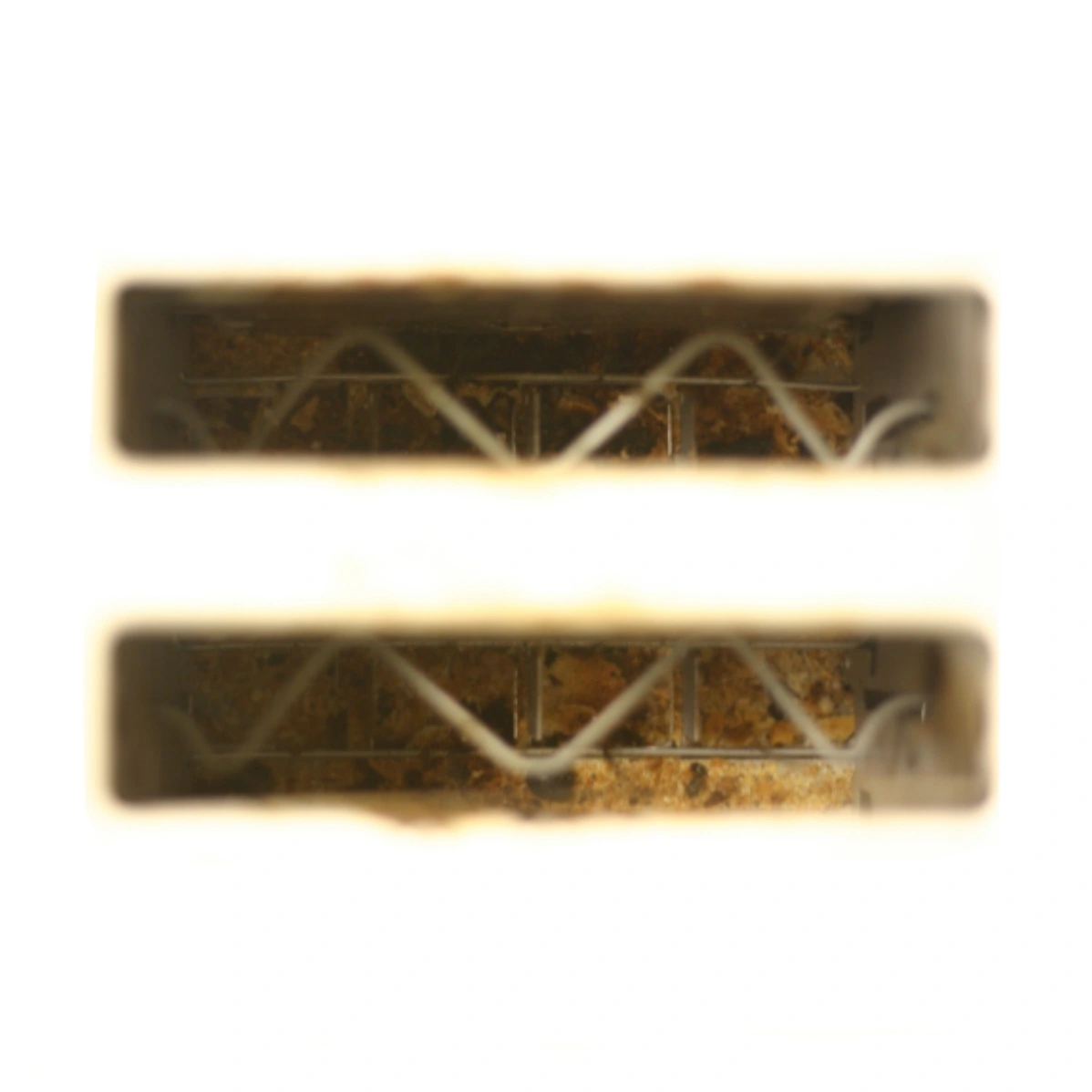I don’t have a problem with snaps as a technology. If you want to use them, then who am I to judge?
But what I do have a problem with is when I don’t have a choice and I am being forced to use what the distro maintainers think is good for me. That is what finally made me quit Ubuntu and switch to Fedora.
Also, Snap is proprietary. That alone is reason enough for me to steer clear.
Well snap itself isn’t proprietary, the backend server distributing the snaps is.
Explain how this distinction matters in the real world?
Snap distribution is as much a part of snaps as Snapd.
Who cares that part of it is open source if other parts aren’t?
If Canonical folded Snap could be taken over by others who could build new server software for it, either from scratch or based off the other projects to develop alternative servers for it, and modify snap to accept multiple repos like that. That’s the difference, also just being able to fork snap like that. Though the fact it hasn’t been done says something about how many real snap enthusiasts there actually are.
If Canonical folded, someone else could come along and reinvent everything on the server side. And that makes it Open Source?
What makes it open source is the fact that the parts which matter most are open source. The part that installs on the system is open source, and because of that it can be more easily tweaked and modified to accept other servers. In actuality it can be modified to do so right now, it’s just that there is little reason to do so because the amount of people enthusiastic about snap isn’t very large, as it has many other problems besides just the centralized server infra.
I do have a problem with them, the same problem was solved, better, with other technologies like appImage (which doesn’t litter your mount list with 100 meaningless entries).
Even flatpak is better, snap is an also ran they’re trying to force on us without being as good as any of the competitors.
when I don’t have a choice and I am being forced to use what the distro maintainers think is good for me.
That’s the case on literally any distro.
And just like on literally any distro, you can also install Firefox from FlatPak, the Mozilla repo or from source.Except on Ubuntu it just installs the snap regardless. If you don’t pay attention you may not even realize that it is a snap. Also the snap store is controlled exclusively by one company with a questionable history.
Couldn’t the same argument be made for any distro? They give you what they put in their repos. If you want a deb package, use the mozillateam PPA (which is built on Canonical’s hardware, same as Mozilla’s snap of it).
IIRC, the issue was that - unless you take steps to explicitly prevent it - Ubuntu would occasionally reinstall the snap version. I don’t remember the details, been a while since I had to dance that dance, but I recall it being one of the things that put me off snap in particular, Ubuntu in general and sparked my search for a different distro.
I’m now on Nobara, a Fedora-based gaming-oriented distro maintained by GloriousEgroll (who also maintains the popular Proton-GE)
Like with any time you’re trying to select a specific source for a package, you need to set apt configuration to prefer that source. It’s standard apt behaviour with a standard way to configure it.
This is why I switched from Ubuntu to Debian.
Same here. What especially irritated me was that even though I installed the .deb firefox and followed the directions to disable snap firefox, occasionally Ubuntu went ahead and reinstalled snap firefox for me.
debian is the best
Ubuntu was great, until Unity debacle, when I switched to Mint DE. Few years later I returned to an Unity free Ubuntu just to be welcomed with snaps and Ubuntu pro.
How has your experience been so far?
8.10 was the last good Ubuntu. (It also had the best default wallpaper ever)
If you look at the “improvements” in every release since, you’ll notice that shit like they do currently isn’t an accident:
9.04 integrated web services into the main user interface.
9.10 integrated Ubuntu One (Ubuntu’s OneDrive, upgradable for money) by default and introduced the slooooow Ubuntu Software Center
10.04 integrated an interface to post on social media
10.10 added app purchases in the Software Center
11.04 made Unity the default
11.10 removed Gnome as fallback to Unity
12.04 introduced the buggy HUD
12.10 added the famous Amazon ad lense to it by defaultand it goes on like this…
Looks like a NiN album cover.
Trisquel GNU/Linux, is Ubuntu with all the non-free packages removed. Don’t see any of that stuff.
I also am very fond of 8.10. It was my first exposure to Linux :)
sudo apt-mark hold snapdThis is literally the reason why I switched over to Debian. At least back then, snaps wouldn’t work if the home folders were not under /home/<username>, breaking all computers on the system I helped run.
At least back then, snaps wouldn’t work if the home folders were not under /home/<username>,
Do you mean that it literally had
/home/hard-coded instead of using$HOME? That’s crazy if so.You can’t use environment variables to set up apparmor rules.
Installed ubuntu on an rpi and firefox there ran snap. Was not very usable. Everything was so slow. Forcing an install of the dep package was the only way to use it. Not very well thought through bu cannonical.
Snap could have been great. Except it wasn’t very good…
I feel like I would be more okay with this is snap didn’t still have a lot of very real flaws.
I am against container as they are slower to start and much bigger. I think they solve the problem the wrong way. Next step is probably a VM…
Firefox have always been possible to run without container so what is the problem for all Linux distributions that containers solve? Nowadays developers have do to both… That did not less the load.
Wait… I’m just about to switch over to Linux on a laptop and was going to use Ubuntu. This looks kind of cursed though?
Tbf, Unbuntu works, but they’re ran by a company which has made some questionable choices. You can still go with it if you don’t care too much, it has the advantages of being user friendly and well documented.
If you’d rather not, but you want something not too far and equally easy, you can go with Linux Mint, which is based on Ubuntu but disables snaps. They also offer differently choices of desktop environments, the default being Cinnamon (which looks a bit more like windows), and another being Mate, which is closer to Gnome.
They also have a “Debian Edition”, which aims to stop being dependant on Ubuntu and may or may not replace the default edition someday, but so far it’s not the one they recommend for new users.
Download the live disc images of Ubuntu, Mint, Debian, Arch blah blah etc etc etc.
Distrowatch.com is a great resource.
Take them for a test drive before you commit.
If this is your 1st forlay into Linux and you just wanna ride, do yourself a favor and install Mint. It works, and it’s a great way to get into it easily and painlessly and operates (mostly) how you would expect it to coming from another OS.
Welcome
Ignore the noise and go with Ubuntu LTS. When you get comfortable with that, you could try Debian.
You could play it backwards too. Try Debian, if you can’t get it to do what you want, wipe and do Ubuntu LTS. But I do not recommend this path if you have no idea what you’re doing. People underestimate how difficult it is to do simple things when you don’t know how to, no matter how trivial.
Switching to Ubuntu is way, way better than staying on Windows.
That being said, Ubuntu is maintained by the Canonical company, and they have made some really sus decisions in the past. Things like putting Amazon ads in the application launcher and then trying to gaslight people when the inevitable backlash arrived.
The meme above refers to Canonical’s own Snap packaging format (think of it like UWP/Microsoft Store apps vs. “regular” Win32 apps), and the way they’re pushing for its adoption. Snap is installed by default on Ubuntu and official Ubuntu flavors. You can uninstall it manually, but Canonical has modified the APT package manager so that when an application is available as a Snap package, it automatically installs the Snap back-end and the application as a Snap package without notifying the user (instead of installing the
.deb-packaged applications, which is what happens on all other distributions that use APT). Canonical recently also ordered that official Ubuntu flavors (which are maintained by independent groups) can’t include Flatpak, a universal packaging format that directly competes with Snap, in their default installations.It’s not as bad as it looks, especially if you aren’t hardcore, but for long-term linux users it’s not great.
Debian has become what Ubuntu wanted to be: An easy, clean distribution that basically just works, which is a major reversal.
Also consider fedora.
But don’t be worried about Ubuntu, it’s still completely usable.
You could try out Linux Mint¹, they’re Ubuntu based and disable Snap by default².
Linux mint has no GNOME or KDE variant, so while they fix many Ubuntu issues, they are still on XOrg.
So? There’s nothing preventing someone from installing either, and they’re adding Wayland support to Cinnamon.
True one can install it on Mint. But at that level, just
- install Kubuntu
- add timeshift
- run unsnap (removes snap, installs flatpak and flathub, installs apps as flatpaks)
- add the new official deb repo for Firefox
- remove a possibly installed Firefox Flatpak (has missing sandboxing) and install with apt
While this is not that hard to do if you’re used to linux, I would not reccommend this to someone who is switching from windows.
Yeah probably. Installing Mint and GNOME or Plasma on there will be waay easier.
Use flatpak
Also how do you know snap will stay removed? I wouldn’t be surprised if it magically came back. Might as well use something that’s a little more respectful of your rights. Pop OS or Fedora seem like good choices if you just want gnome wayland. If you want KDE go for Fedora KDE
I moved to Fedora kde. Smaller, newer packages(kde 6), and wayland updated.
There is no reason to fight Ubuntu, just pick something that is not against your priorties. I came from Windows 10 and there was a lot of fighting for respecting user choice.
I would never use dnf Fedora again, it is an unstable mess.
I am on Kinoite since a year or more? Works great. Fedoras Packages are awesome, stable and often better than Uwuntu or OpenSUS
But dnf upgrades simply were extremely unreliable.
It doesnt matter how your distro looks, thats the desktop.
It matters how it backups, upgrades, recovers.
Install cachyos
The nextcloud snap is the best and easiest way to selfhost nextcloud.
I said it. Fight me.
The AIO docker compose container is far better, and I’ve run Nextcloud in pretty much every installation path in the last decade, using baremetal, my own docker, snap, NCPi, and VMs. All of them have had issues with updating, backup and the host going sideways for some reason or another. The AIO has been flawless for far longer than any of them managed.
You are 👍, nextcloud needs like 2 admin per each user. The snap version works fairly well even after a lot of virtualization layers. Proxmox -> Ubuntu LXC -> Snap -> Nextcloud
Over docker compose?
BSD jails are superior in every way.
I can’t say I agree. BSD isn’t widely used or supported and the jails require manual setup and maintenance. Meanwhile docker compose and other container runtimes are well supported and can easily spin up and down environments based on a declarative configuration.
Can I download a jails image?
No that’s insecure, which is the whole point of containerization in the first place and subsequently purpose of jails within BSD
IMO the biggest issue with snaps in the sandboxing. Makes so many apps unusable for development.
Isn’t that what “classic” confinement is supposed to solve?















